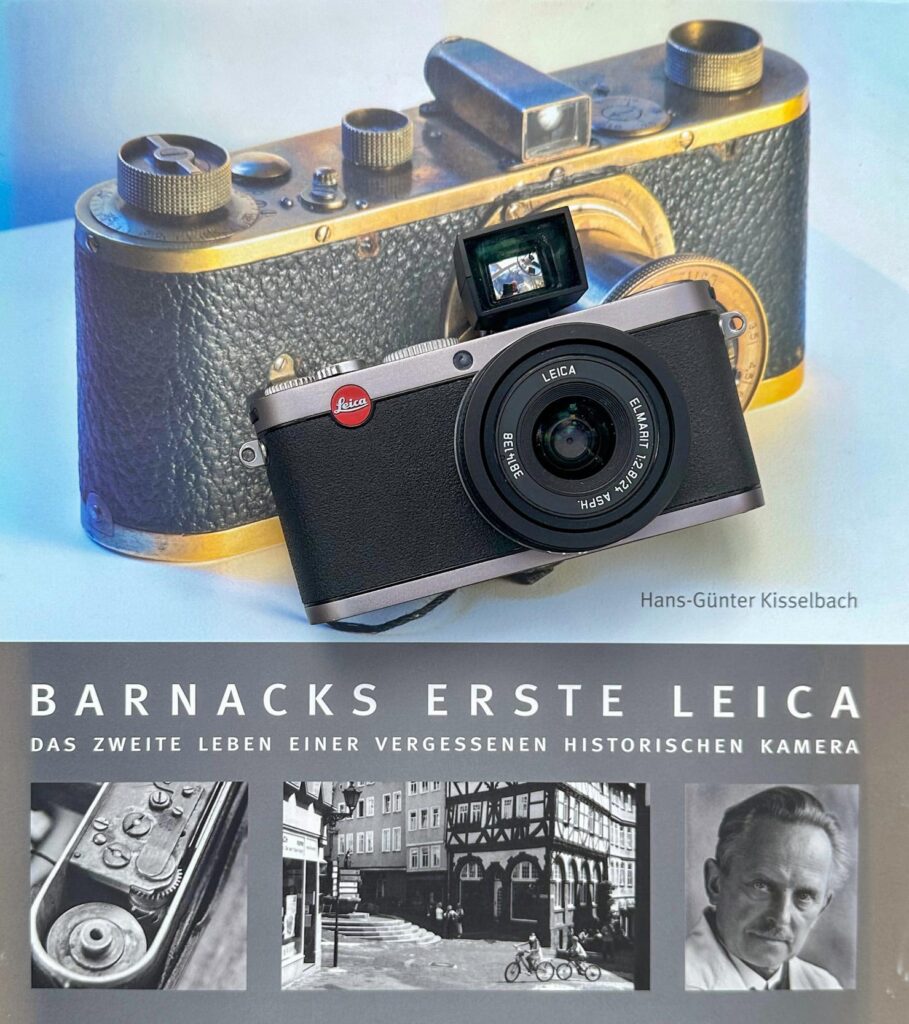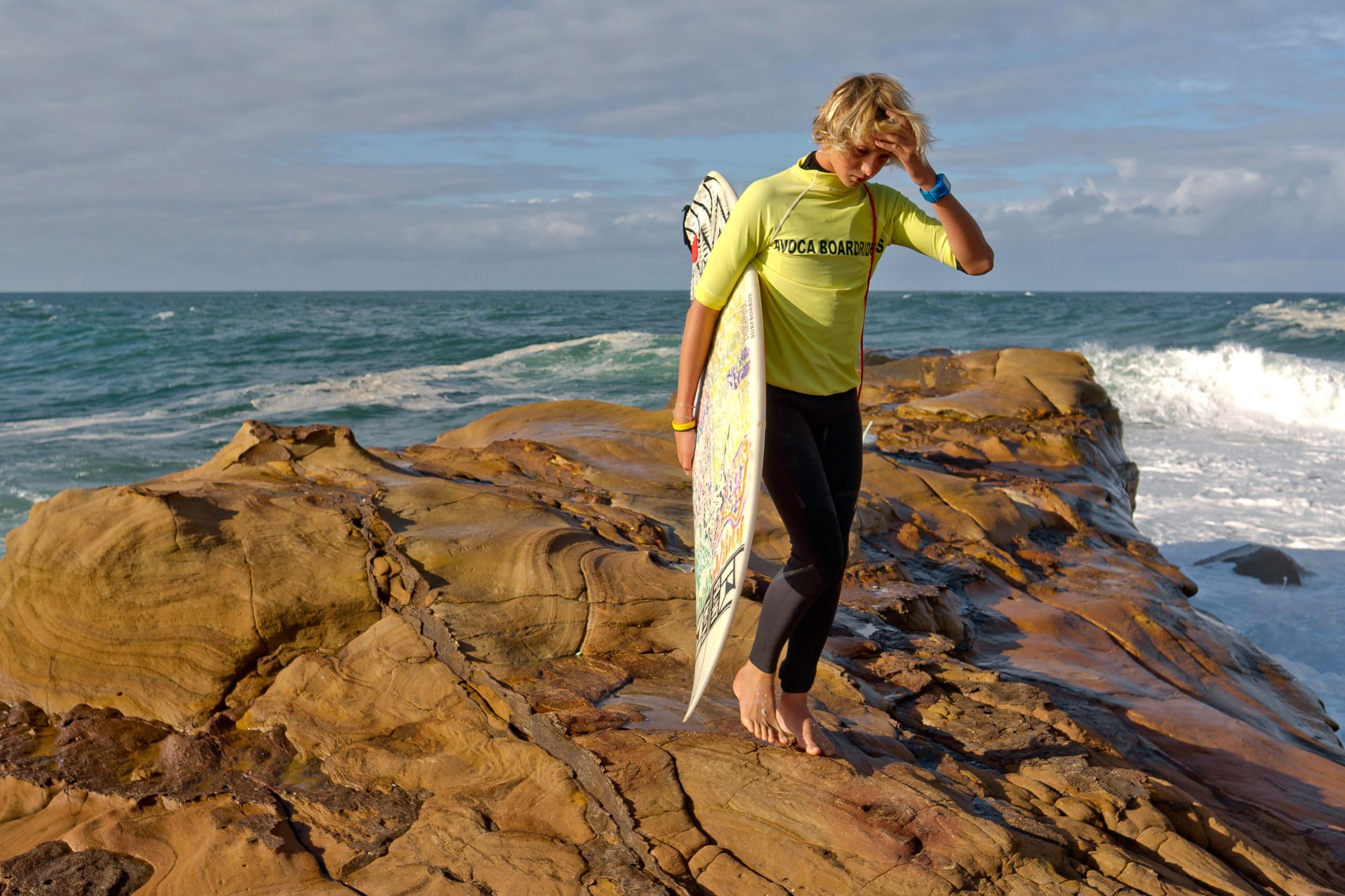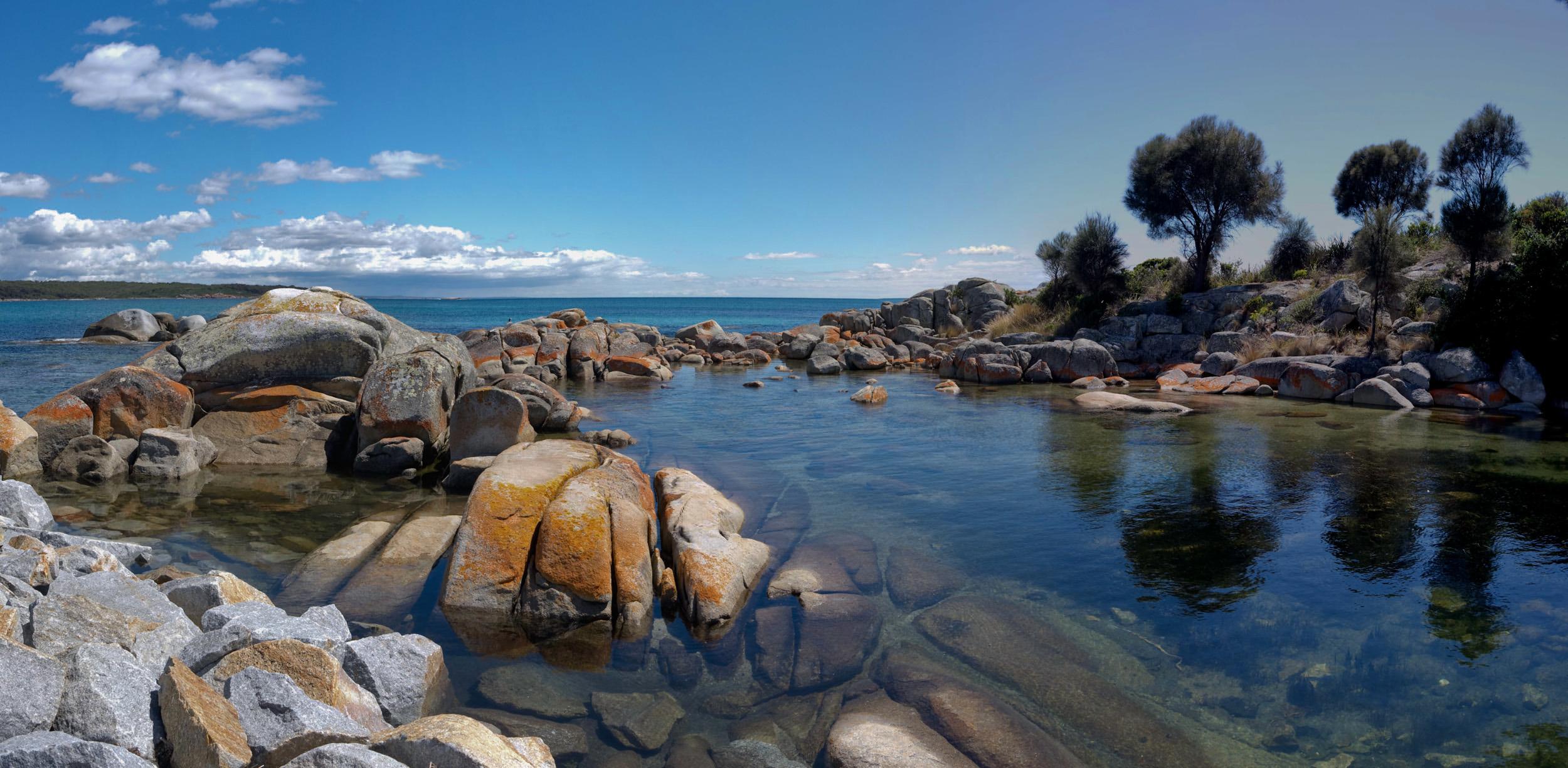My trusty Leica X1 is suffering from an intractable disease. It isn’t exactly terminal, except in terms of my patience, and the little camera could be resuscitated. But I’ve decided enough is enough. The sad thing is that the X1 has an Achilles heel, and it is that which has bought my much-loved X1 to its final resting place.
I came to the Leica X1 by chance. Back in 2007, I had sold my much-loved Leica M6 and a bagful of lenses. I was done with film photography for good. An exciting digital future beckoned; the Sirens of the pixel had sung their song, and I was captivated.
Choosing the way forward
As my Leica hoard went to a new owner, I made do with a Canon G7, a very acceptable stopgap, until I could choose a serious digital camera. The G7 was a competent little camera, but at that time, the digital world was advancing at a very rapid pace, and I did not want to commit fully to a system until I was certain that I’d found the winner.
I was not convinced that Leica was the way to go in the digital era. I owned a Digilux 1. It was a very clunky and basic device. It was difficult to take seriously. The M8, with its APS-H 1.33 crop sensor, did not appeal. I reluctantly concluded that my Leica days, which extended back to 1967, were behind me.
Somehow I was put onto a Fujifilm mailing list and was regularly receiving ‘teaser’ emails about a future Fuji camera with what sounded like an interesting specification. That camera was eventually launched in September 2010 as the very competent X100.
Leica’s aces
While I waited eagerly for the Fujifilm mystery camera to be launched, Leica played two surprising aces. In September 2009, the company launched the M9 and, from left field, the X1. The M9, which finally gained a full-frame sensor, put Leica back into the serious digital game. But the price was way too rich for my depleted pocket, particularly since I had sold all the M mount lenses when I parted with the M6.
The X1 was a real surprise, as it turned out. It was an unusual design, small and light (the nearest you could get to a “Barnack Leica”) with an APS-C 12.2MP sensor and a relatively fast 24mm (36mm-equivalent) f/2.8 Elmarit lens.
The lens retracted into the body and extended automatically when the camera was switched on. There was no integral viewfinder. You either used the very inadequate LCD screen (similar to that on the new M9) or bought the Leica hotshoe-mounted optical viewfinder. The final feature of the X1 was an absolutely eye-watering price tag of $1,995 US.
Ridicule for the Leica X1
Now, back in 2009, there were many more photography blogs than there are today. Armchair digital camera experts were all over photographic social media. The X1 was ridiculed at launch by most of them (unfairly as it happened, but not unlike the reception of the later X Vario). However, it’s not difficult to understand why there was so much negative coverage. The price was so high, and the specification was not appealing to the gearheads.
The curveball came when reviewers started using the camera and found that it produced images of superb quality. How could such a little camera with its “toy town” retracting, plastic-barrel lens produce such wonderful images? But it did. And, for that matter, still does.
It took six months before the X1 reached Australia, and I was able to handle one in a Sydney camera shop. I was underwhelmed. It felt light and plasticky, and I could not reconcile its size, feel and specification with its astonishing price tag. I decided to wait for the Fuji to arrive.
Seduced by the Leica X1
However, the very high praise for the X1’s image quality continued. In January 2010, I happened to be in New Zealand when I spotted a black X1 in a camera shop window on the main street. I went in and fondled it. Convincing myself that the reported image quality was the decider, I resolved to buy it. Unfortunately, or fortunately, as it turned out, the New Zealand retail price was even more eye-watering than the Australian price. So I resolved to wait until I was back in Australia, where I ordered a black X1 from my favourite camera shop, Photoco Camera, in Adelaide, South Australia.

Because black X1s were on backorder, it took a few weeks before my camera arrived. When it did, I found that straight out of the box, the silly pop-up flash would not stay locked down. I was not amused. So much for the famed Leica quality control.
Teething troubles
The X1 just didn’t seem to exude that aura of quality that I had been used to with the M6 and earlier film cameras. I did wonder, especially when I saw a small label in the packing which stated: “Made in Vietnam”. But the camera quite clearly carried “Made in Germany” and, even though EU origin laws were a bit flexible at the time, I don’t think they’d go that far. Still, whatever the background, there is no excuse for shipping a camera with such an immediate and obvious defect. I handed a yellow card to Leica.
Quite why Leica fitted the silly pop-up flash to the X models, I will never know. I have never ever used it on my X1 or X Vario. It is as useful as an ashtray on a motorcycle.
Anyway, the camera went back to the then Leica importer, and, of course, the parts for a black X1 were not available. As I was about to head off to Vietnam on holiday, they loaned me a new X1 with a silver satin finish. I bonded with the camera in Vietnam and decided that, although I preferred the stealthy black, I would hold on to the silver version, and they could keep the black X1 when it was eventually repaired.

Leica X1: Expenses all round
I soon discovered that the camera was not the only item with a high price. Leica offered an optical viewfinder which slots into the accessory shoe. It is plastic, and it retailed at A$650! At the time, I could buy a new and very competent Canon G series camera for that money. I am sure that Leica did not sell many X1 OVFs because Voigtländer offered a very neat little metal finder for a third of the price. I bought one.
I suspect, and I am being generous here, that the manufacturing cost of the Leica OVF was, at the maximum, A$50. Quite a margin. If they had retailed the Leica OVF for, say, A$250, I am sure that they would have sold one with almost every X1.
In a twist to this tale, Leica X1 OVFs are now rarer than rocking horse manure. But one did come up on eBay two years ago for A$100. I bought it. Yes, it is brighter than the Voigtländer unit I have used for over ten years, but not A$550 brighter.
Leica X1: The good bits
After this rocky start, my X1 story has been almost all good news for the past 13 years. The X1 has travelled with me all over the world. It is small, very easy to use — no brain-teasing menus — and the image quality is superb. It was the ideal travel camera. Obviously, the lens is a stunner. But the processing firmware is also very well matched to the lens/sensor combination. The JPGs straight out of the camera are excellent. Indeed, most of my X1 shooting has been as JPGs and not RAW.
By today’s standards, however, the X1 is now vintage and seriously underspecified. Battery life is poor, the LCD screen is low resolution, and the focusing is slow. But it takes beautiful photos, and I have included with this story a small selection from the approximately 8,000 X1 images in my library.
Leica X1: Achilles and his heel
The sad thing is that the X1 has an Achilles heel, and it is that which has bought my much-loved X1 to its final resting place — in a drawer where it will live out its days. The offending bit is the tiny clip which retains the battery. If you own an X1, X2, X Vario or X and have not suffered a broken battery clip, count yourself as being very lucky.
Yes, a tiny one-cent piece of plastic holds the battery in place. Mine has broken — it has split or popped out on its tiny spring — four times during my custody of the little camera. Each failure entails the X1 making a trip back to the Leica repairer. Mine has been back three times for a new clip to be fitted. I have suffered the same break once on my X Vario, but that’s another story.
To be fair to Leica, the clip has been fixed under warranty every time, but my X1 won’t be going back again. Leica is no longer supporting the X cameras, and enough is enough. The silly broken clip has bought an enforced early retirement. Sad.
Leica X1: Curse of the clip
This may seem like an overreaction to a minor problem, but this clip has been a curse for most X1 owners. Repairs went on for years, and yet Leica did nothing to change the design.
There was no stronger plastic clip and no improvement to the very simple mechanism (involving a tiny spring, which can never be found once it is ejected onto the carpet or a muddy track) to hold it in place. It became a serious inconvenience for the X1 owners and a big warranty bill for the factory. Above all, this ticking time bomb of a clip made it impossible to embark on a long trip with just the X1. You could so easily be let down. Strange days indeed.


The other factor driving my X1’s enforced retirement is that I have other cameras to use, including the iPhone and my new bestie, the Leica Q2. For 15 years since I retired, I have taken an early morning walk here in Terrigal, New South Wales. I used to carry the X1, but for the past three years, I have relied on an iPhone. I prefer the ‘look’ of the X1 photos, but the iPhone is so much more convenient. Furthermore, I can’t pay for an early morning coffee with my X1.
It is ironic, therefore, that last week’s “for-old-times-sake” X1 morning outing resulted in the offending clip again springing forth into oblivion. Anyone who can find that spring after ejection deserves a medal.
A better approach to APS-C
It is a credit to the optical performance of the Leica X1 that it has lasted so long, despite Leica’s best efforts to trash the APS-C sensor. While the iPhone is a substitute, it isn’t a true answer, as we all know. Sensor size does matter. But Leica has wilfully and flagrantly mismanaged its approach to the APS-C sensor, culminating in last year’s surprise withdrawal of the entire CL system. Rest in peace, although so many Macfilos readers were upset.
Despite Leica’s murky record, two other companies, Fujifilm and Ricoh, have enjoyed great success with the wide-angle, fixed-lens camera. And that success comes from consistency and planned progress. The 35mm X100 series and the 28mm Ricoh GR (now supplemented by the 40mm GRIIIx) show that there is a future for APS-C. Both cameras hit the market around the same time as the X1, but the two manufacturers took the eminently sensible approach of sticking to organic development.
Today’s X100V and Ricoh GRIII are recognisably the same cameras as their early versions. Yet in the same 12 or so years, Leica has squandered its market by constantly swopping and changing to no effect. First, the X1/2 series gave way to the X and the X Vario. Then came a complete change in direction with the T system. When that didn’t succeed, it was time for the CL. The CL was an admirable camera but suffered from a complete lack of development. In short, Leica ruined its chances in the APS-C market through poor marketing and wilful neglect.
Strangely enough, and quite by accident, Leica has created a full-frame successor to the X1 that has proved a resounding success. The Leica Q series was a hit from the start, and it is still doing well. The Q2 is the most-borrowed fixed lens camera in the Lens Rentals catalogue and should have a long life ahead of it. That is if Leica can resist the temptation to meddle and change course at every opportunity. At least the Q cameras don’t have a battery clip that does a Jack-in-the-box act every few months.
If you happen to live outside Australia, there are reputable repairers who will tackle the Leica X1 clip issue. Among these is ex-Leica service technician David Slater in England. Check out this story.
That pesky battery clip explained
Read more on the Leica X1
Read more from the author
Visit John Shingleton’s blog, The Rolling Road
Join the Macfilos subscriber mailing list
Our thrice-a-week email service has been polished up and improved. Why not subscribe, using the button below to add yourself to the mailing list? You will never miss a Macfilos post again. Emails are sent on Mondays, Wednesdays, and Fridays at 8 pm GMT. Macfilos is a non-commercial site and your address will be used only for communications from the editorial team. We will never sell or allow third parties to use the list. Furthermore, you can unsubscribe at any time simply by clicking a button on any email.



















A great post, John. I had and sold an X2. Missing it now. It had a broken battery clip but the battery door held the battery just fine and it worked like that for years. What am I missing?
I cannot understand why good camera manufacturers insist on building expensive cameras with those flimsy plastic battery catches. I had two Nikon 1 bodies where the catch broke. The catches on my much more expensive Dfs are a little better, and none have failed yet, but they still look rather flimsy. I mean, how much would it add to the camera’s cost to use a simple metal stamping instead of the plastic?
Couldn’t agree more. The Leica X1 was a case in point, but most of my current cameras have a flimsy battery catch. Fortunately, most of them hold up despite the flimsy appearance.
Thanks for your incredible images. I can pick out all my images shot with the X2 or X1…Thanks for this site@
I just purchased my second X1 from MPB.COM as excellent. Received yesterday and has a small spot in the bottom right side of the frame. I cannot believe they didn’t see it. or saw it and didn’t think it was a big deal. When I had my X-E the issue of the battery compartment came up and Dave at Leica sent I kit, which I still have. But people are saying that the lens and sensor are one unit. What to do?
My battery clip failed and I emailed Leica recently and they sent me a replacement part free of charge and emailed me instructions. Well done Leica after so many years.
You can buy a replacement clip on eBay from China, costs about £23, and it’s really simple to fix.
Sorry to hear of the X’s retirement and that battery clip issue. And glad another reader has indicated that you are no longer Mr X but now Mr Q.
My battery clip expired last year on my X 113, after initially seeking its replacement, I discovered that a small piece of tissue gently tucked under the battery with the door shut allows it to sit securely and the camera continues to work fine.
Thank you for the wonderful images and journey. I’ll look forward to seeing future Q images and where that takes you.
Best D
Dear Friends
I too have had to give up the ownership of my poorly X1! An amazing camera in many ways beautifully simple to operate. Amazing picture quality, the perfect shape to hold. What a pity the screen was low resolution in fact dreadful compared to Panasonic or Sony offerings at the time.
Also no optical viewfinder without paying a fortune. Plus the known faults of the battery clip and the flash gun not locking in place. I have to admit that I have replaced the X1 with a Sony RX100 Mkiii which is a lovely and very capable little camera for my travels. The Leica X1 was potentially a world beater with a decent screen and a built in viewfinder and perhaps a less expensive Panasonic model. Who could ask for anything more !
Best Wishes from the Yorkshire Dales England John
Hi John! Thanks for the great story, and the incredible photos! I would have been pleased as punch to have taken any one of those superb shots. I am a relative newcomer to the Leica world, and so am unfamiliar with these X-series cameras, but in the hands of a great photographer they were clearly capable of sensational photos! I was pleased to hear that you are now the proud owner of a Q2. I am sure you will enjoy using it – I certainly do. Can’t wait to see a gallery of your Q2-generated shots in a future article! Cheers, Keith
Thanks for the moving obit and magnificent photos! I still have and often use my X2 and have remained faithful to my CL and TL2 -all great backups and often substitutes for the M11 – not always the perfect travel camera! The X2 is surprisingly good in lowlight and for family evening outings and the CL for travel – the 55-135 is exceptional and all the lenses approach Ms in quality. Here’s to faithful use of non-obsolete tech!
Really good to read your story, John, and remember the days when you were “Mr X” (before you became Mr Q). Even then there was often a spaciousness about your photos – must be something to do with Australia. I started my Leica days with a D-Lux 4 – also a very remarkable little camera – and joined the X tribe with an X2 which is still going strong and great to use. It shares an EVF with my XV and both are better for it!
Thanks John for a great article and wonderful images. Seeing your images made me buy my X2 and recently the X Vario. My X2 is going into repair at the end of the month. I hope the handgrip on both cameras will protect the battery door.
What a wonderful obituary for your camera, John. Thanks for sharing it. Your images show honour to the camera with their stunning quality in technical but all the more in creative view. Isn’t it great that you had such a wonderful time together, you and your X? JP
John, thank you for writing this heart-warming article. People who aren’t into photography can’t understand our “emotional” attachment to cameras. In fact, I still have my very first camera, the Nikon FM2 and most of the manual focus lenses. I never used or owned any of the Leica X series APSC cameras but the image quality, based on your photos here and reviews online are very good. I was actually considering the X-Vario before purchasing the D-Lux (109) in 2015 but by then it was already hard to find even at the Leica stores. I never got the chance to try it in person so I decided on the D-Lux instead. I upgraded from the D-Lux to CL in 2018, after my D-Lux was stolen along with my beloved Nikon Df. I was still living on Guam back then and the CL travelled across Asia with me up until the pandemic. Despite not being weather sealed, the CL performed perfectly in light rain and sea sprays; I hide it inside my rain jacket when not shooting. During the pandemic, I used it to document lives on the island. For me, the CL is almost a perfect everyday and travel camera. It will be perfect if there is weather sealing and phase detect auto focus. I relocated to Miami, Florida in 2021 and started traveling again by the end of that year, the CL still accompanies me in every trip and my everyday life. Ironically, the Leica store in Miami is within walking distance from my condo but I still haven’t visited it yet. The discontinuation of the CL/TL APSC system really disappointed me, to the point that I feel I have been betrayed. My future with Leica is uncertain, I will keep using my CL until it fails and can’t be repaired anymore. I really hope Leica can produce a compact, portable full-frame inter-changeable lens camera, other than the M in the future. I won’t switch to the M because the high price can’t be justified since I don’t shoot street photography often, the range finder system doesn’t offer enough advantage to me. Spring is almost here, I wish everyone happy shooting in the great outdoors!
I don´t get it…. For myself, I own both an X1 and an X2, and of course that pesky clip is long since AWOL on both of them. Well, so what? Both cameras still work perfectly after just closing the battery door and shooting away. None is “retired” (although the X1 is seldom used since I got the X2, for obvious reasons).
Of course, there is one less layer of security: If (when?) the rather flimsy door lock fails, the battery will fall out, most likely in some place where it will disappear without a trace…. But, until that does happen, what keeps you from using this Leica classic?
My X1 lapsed into disuse after 10 years sterling service when its internal battery ceased holding a charge and I kept forgetting to reset the ‘time /date’ when the main battery was swapped over. Unfortunately, in mid-2022, when I approached Leica Mayfair for internal battery replacement, Leica Camera AG no longer offered servicing and support for any Leica X-Series models. At that time, former Leica Mayfair technician David Slater had not commenced offering his now most welcome servicing for older Leica digital cameras. Surprisingly, Leica Mayfair did offer me an upgrade from my X1 to the then, “soon to be discontinued”, Leica CL plus choice of one TL lens – and with a 45% discount! The offer was a ‘no brainer’ and was immediately accepted – subject to me returning the X1 to Leica Mayfair. I was allowed to keep the main battery (which fits my X Vario) and all the X1 accessories. Thus I obtained a Leica CL / TL 18mm combination for a most reasonable £1801.22. The X1 had provided over 10 years enjoyable use and its compact portability is still missed – so it’s possible I could source another – if an example is offered ‘at the right price’. However, it’s very noticeable that in recent months, Leica X series s/h £prices have increased significantly – fuelled by demand and the fact that fixed lens Leica X-Series compacts still offer the best ‘bang for buck’ for anyone seeking entry-level ‘fixed lens’ Leica digital cameras with relatively large APS-C sensors. Fact is, Leica APS-C, will always “whooop” the “badge engineered” Leica M4/3 and 1″ sensor digital compacts for quality results – especially if large prints are required. All Leica X series cameras are Leica ‘in-house’ designs – even if the original X1 was actually made in Vietnam – before being “box engineered” in Germany 🙂 Thank you John for the Vietnam anecdote!
“Surprisingly, Leica Mayfair did offer me an upgrade from my X1 to the then, “soon to be discontinued”, Leica CL plus choice of one TL lens – and with a 45% discount! The offer was a ‘no brainer’ and was immediately accepted”
A few years ago I sent in a Fujifilm X100S (not in warranty) for repair. An actual person called me on the phone and said they could not repair it, but would I accept a brand new X100F for $400+ USD? This was when the X100F was still the latest, retailing for $1300.
Ditto.
Can not say thank you enough times for all the enjoyment JOHN S and his X1 have given me. His blog is the reason I bought, and still use, 2×1 an X2 and XE. Only one x1 had bad battery clip deal. moved up to Q as main camera, but grand daughters still use X’s. Thank you again lighting my interest in Leica!
John, thank you for revisiting your experiences with the classic Leica X1 and reminding us of the affection with which it is held by so many users. Mine are in similar vein to yours, apart from the exotic places you have taken your X1. Lovely pictures, regardless of means. In contrast, I have never experienced your frustration with the battery door.
I have tried, in vain, to locate my copy of LFI issue #3/2010, page 44, where an interesting and relevant article entitled: ‘From Passion to Product’ can be found. In the article an Asian admirer of Leica products, I believe he was a Japanese designer, conceived a design closely aligned to the 1930s Leica cameras. He took it to Leica Germany for consideration. My memory tells me that he was hired by Leica to head up a team to produce what we now know as the Leica X1. (Perhaps a member of our community might chip in with the name I was seeking). The article is a fascinating account of the process followed. The product was highly successful and was the first sub-full-frame digital camera approved to be used by contributing photographers in Getty. (I have had quite a few Leica X1 pictures published, worldwide, through an agency)
At the time of launch, the Leica X1 was the first new product of its kind in the world. Leica was a world leader. Yet they allowed other competitors to overhaul their pioneering position. Compare that situation with Fuji or Ricoh, whose comparable, but later products, have a constancy of form and size over many years. They progressively developed new and improved versions without introducing new systems. Not so with Leica.
Sadly the story really ends there, because the lack of an established design bureau, within Leica, meant that there was no continuity of development and progression beyond the X2. The pattern of stuttering starts was repeated, year after year and product line after product line. I cannot see Leica changing, as currently constituted. I feel very sad about the situation but accept other factors might be driving their meandering direction.
https://tinyurl.com/Le1c4X1
Well said, David. I thoroughly agree.
Mike
I met Kaoru Mokunaka on a couple of occasions around the time of the X-Vario (or was it the T?). He was very focused and a great guy – I think his real achievement was the simple and intuitive use of an A section on both the shutter speed and aperture so you could get Manual, Shutter Priority, Aperture Priority and Program mode without having to have a separate mode dial. He was still working with Leica a few years ago, but I imagine he is retired now.
But David – although the APS-C development was badly done (no doubt about it). I don’t see anything meandering about what they’re doing at the moment – there’s a bit of a pause in the SL and the S lines (but only to take a bigger leap forward) but both the M and Q lines seem to me to be very focused and directed, with careful incremental improvements . . . wouldn’t you agree?
How interesting that you met Kaoru Mokunaka when he was working for Leica. The dashing of his ambitions for the X-line must have been very dispiriting for him. I was in correspondence with Leica Customer Support over my X Vario when I learned that my recommendations could not be passed to the design team because it no longer existed. Hence, my disillusionment with Leica’s philosophy. As Ricoh has proved, Kaoru Mokunaka’s deep desire to maintain the size and shape of the early Leica III series in his digital compact derivative, must have been deeply disappointing for him, and his ultimate customers. Ricoh achieved what Leica has failed to do.
I do agree with your assessment of full-frame models. That clearly is Leica’s focus at this time. My use of the term ‘meandering’ was intended to apply to the sub-full-frame sector of Leica products (including the co-produced and rebadged outsourced models). Many loyal customers of Leica products had hoped for a future in this sector of Leica’s plans, which is the more affordable for many photographers. Even if Leica has plans for a surprise in this sub-full-frame sector, they will have an uphill battle to persuade customers of their long-term value and intentions.
Your article evokes mixed emotions. Certainly sadness over the loss of an old friend. But
It gives us the opportunity to view some absolutely stunning photos. By the gods, I want that picture of the young monks to hang on my wall!
That old truism — it’s not the megapixels, it’s the eye and mind behind the camera.
Yes, the photos are beautiful. My favorite is the B & W of the boat on the lake.
Great story John, great pictures and I’m sorry to hear about the demise of your X1. there is still a working one around here (Saul has it) but I don’t think it gets a lot of use!
The X1 does indeed render beautiful images. As did the photographer!
The whole question of planned obsolescence is a fascinating one. I know Nikons, not Leicas. The designers of Nikon pro cameras in the 1960s -1970s went way overboard in the opposite direction. You could probably bury me with one of my beloved F2s and dig it (not me) up 200 years from now and it would still function. Mechanically. In fact, prior to the F3 Nikon, unlike nearly every other camera maker, refused to put meters in the bodies because they knew the the electronics would give out after a while. Experience has proved this true; just look at the F2 meter finders for sale on eBay, and see the ones with a working meter are not so common!
I can just imagine some younger management staff at Nikon trying to convince the old timers that making the camera bodies so robust was pointless, as the advance of technology was fast outpacing the life-cycle of camera designs. Eventually the young one won out.
Hi Martin
Interesting . . . and although the Leica APS-C is a rather sorry tale (with some shining moments) in other directions they are certainly not embracing planned obsolescence.
Are they the only company making a camera without a meter? I think they must be (M-A) and although the MP and M6 both do have meters, the camera will operate manually without a battery, which might be construed as an even better bet!
all the best
What beautiful photography, John. And very well written indeed. Battery doors have been a problem for more cameras in the past. I managed to repair one with the help of a paperclip. Drilled 1mm holes in the plastic door, bent the paperclip into the precise shape needed, cut the ends, bent them over parallel to the plasic door and fixed them with two-component glue, and finally painted paperclip + glue in the appropriate color. I can say this DIY repair has lasted until this very day. I don’t know how the X1 battery door actually works, weather some sort of DIY solution could fix this specific problem, but who knows, maybe there is something possible. Besides the cameras you mention, one could also mention the Sony RX1. A small camera with a very beautiful Zeiss Sonnar 35mm f/2 lens, and a more than adequate 24 MP sensor. OK, it’s not a APS-C but a full-frame camera, but the camera is well built. The newer RX1R version with a higher resolution sensor in practice didn’t add any resolution, as could be judged when comparing the reviews of both cameras on the sadly soon-to-be-closed DPreview website. I use the RX1 with the stick-on optional EVf, because I’m a viewfinder guy.
Obsolescence is a sad 20th and 21st century disease that describes cynical marketing with no consequence for the future longevity of products produced to date.
If there were awards for Obsolescence, Leica would have been nominated multiple times, but would have surely won Gold with their stunning performance with the T and CL lines. Masterful, breathtaking, thoughtlessness, without the slightest consideration for its customers with regard to the future.